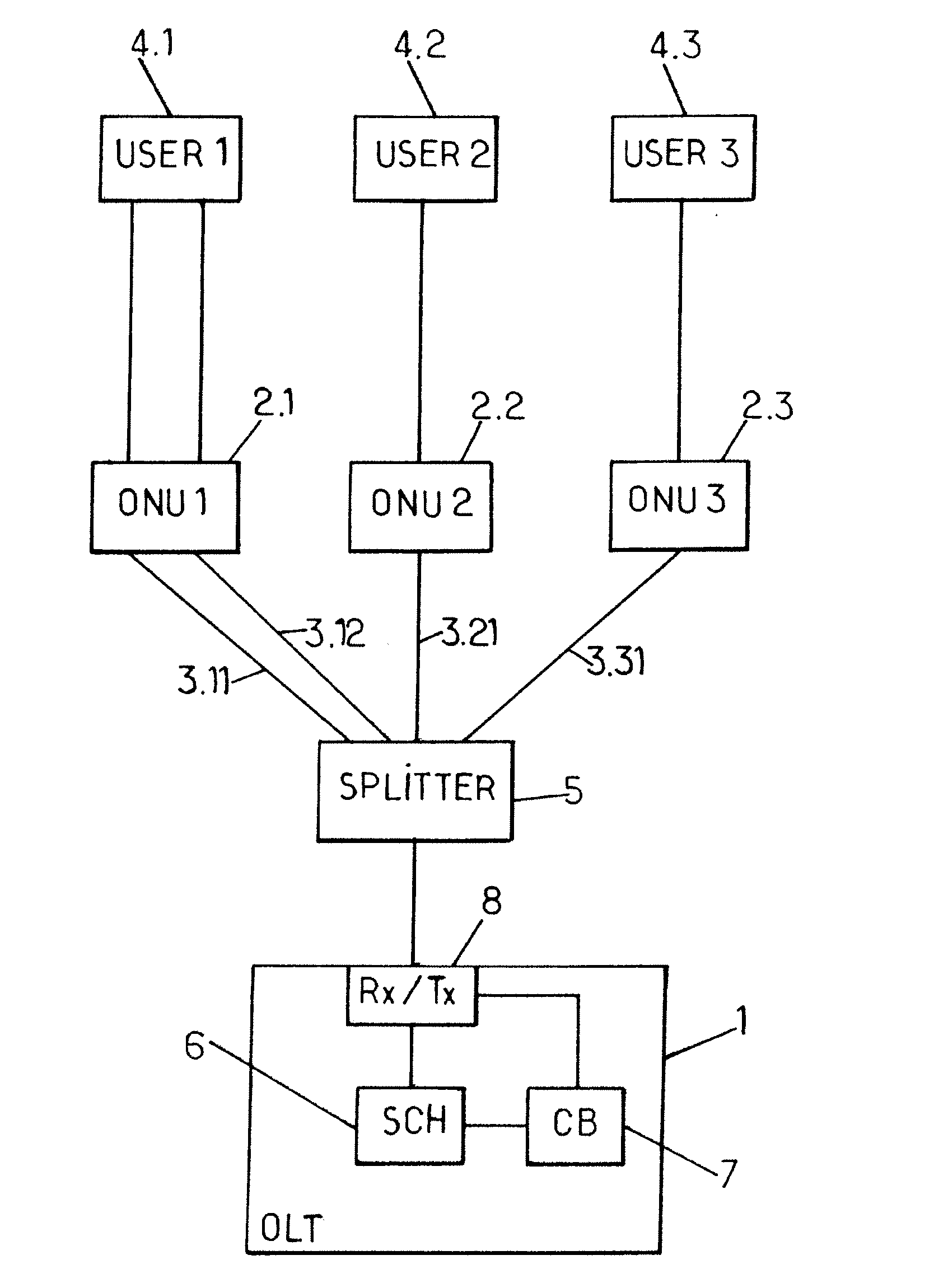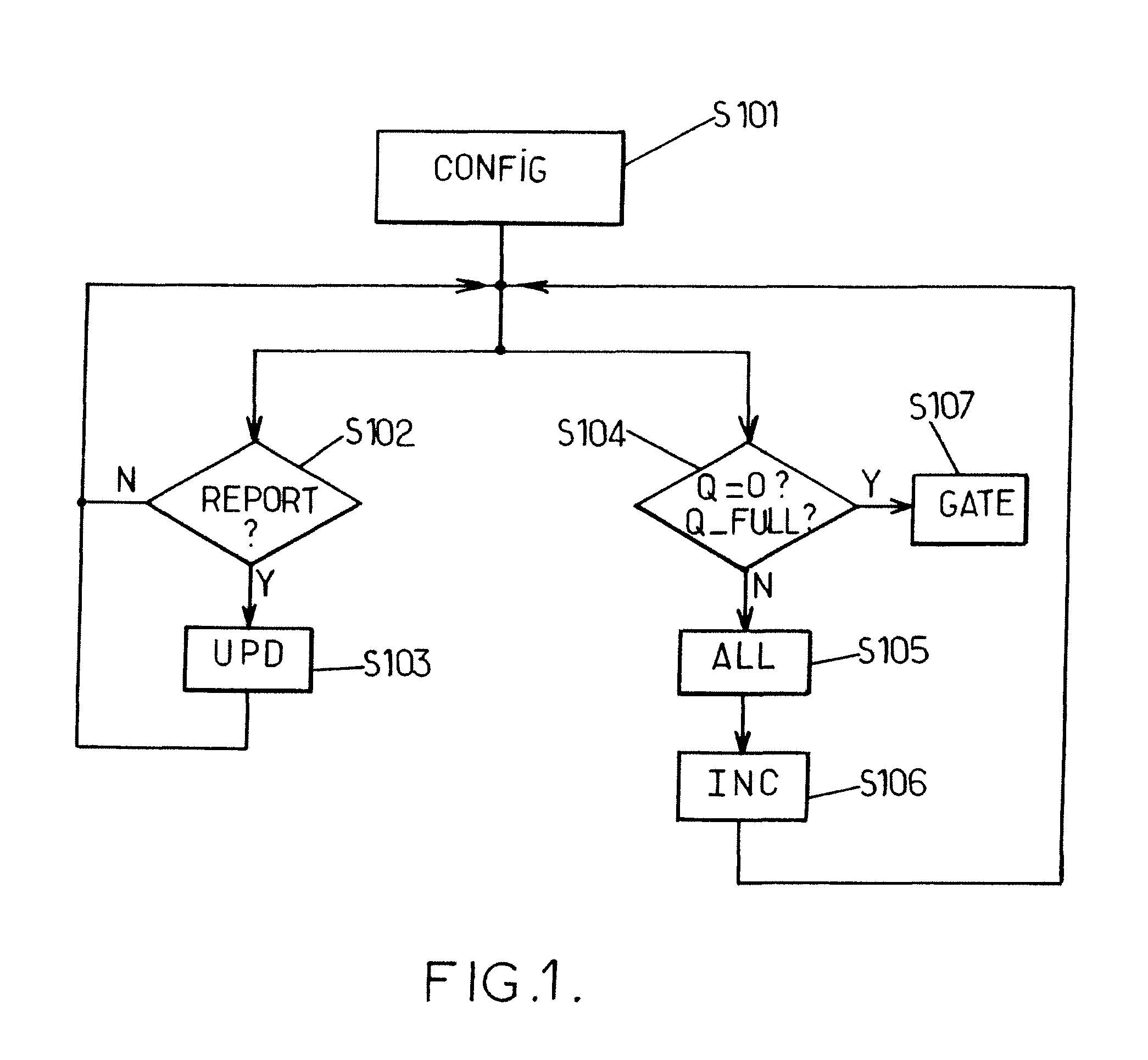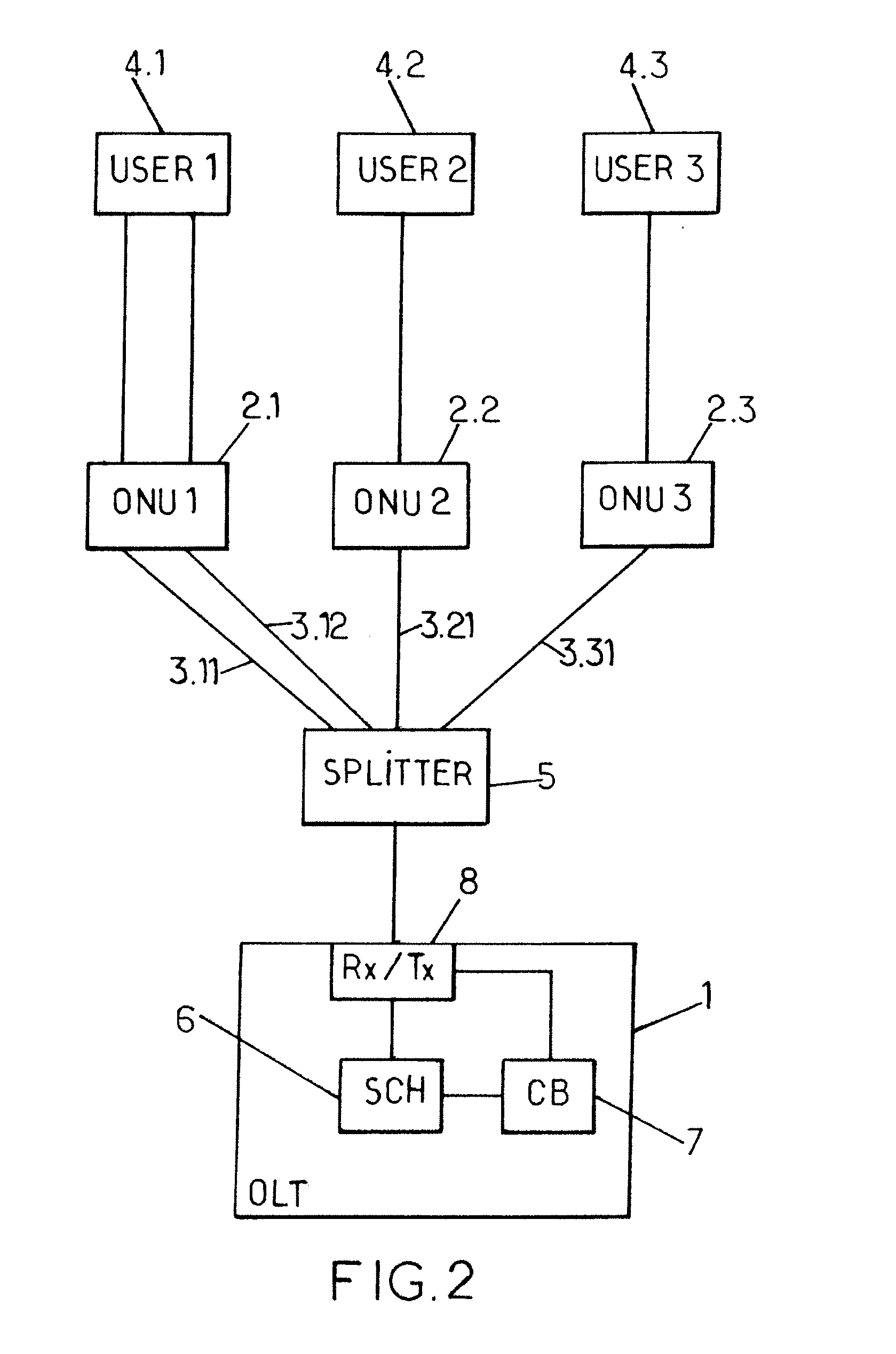Optimized dynamic bandwidth scheduler
a dynamic bandwidth scheduler and dynamic bandwidth technology, applied in the field of access networks, can solve the problem of not being able to manage more than 32 onus per dba cycle, and achieve the effect of improving the flexibility of the method
- Summary
- Abstract
- Description
- Claims
- Application Information
AI Technical Summary
Benefits of technology
Problems solved by technology
Method used
Image
Examples
Embodiment Construction
[0081]A solution to reduce the overhead due to REPORT messages and guard band is to reduce the number of logical links LLi scheduled or served in each DBA cycle. Without limiting the total number of logical links LLi supported in the EPON, the method consists in a dynamic assignment of logical link transmission opportunity (or allocation of timeslots in a given DBA cycle) instead of the legacy assignment presented in the part relating to the state of the art.
[0082]Such a solution leads to reduce the overhead. To avoid obtaining an unfair queuing scheme, because this solution increases the upstream transmission time, given that ONUs shall wait several cycles before having timeslots allocated to them, the invention introduces for each logical link LLi a next time emission value TTTi that guarantees fairness among the different logical links LLi.
[0083]Thus at each cycle k, a trace of how were served the logical links LLi in the past is maintained so that the same logical links LLi are ...
PUM
 Login to View More
Login to View More Abstract
Description
Claims
Application Information
 Login to View More
Login to View More - R&D
- Intellectual Property
- Life Sciences
- Materials
- Tech Scout
- Unparalleled Data Quality
- Higher Quality Content
- 60% Fewer Hallucinations
Browse by: Latest US Patents, China's latest patents, Technical Efficacy Thesaurus, Application Domain, Technology Topic, Popular Technical Reports.
© 2025 PatSnap. All rights reserved.Legal|Privacy policy|Modern Slavery Act Transparency Statement|Sitemap|About US| Contact US: help@patsnap.com



